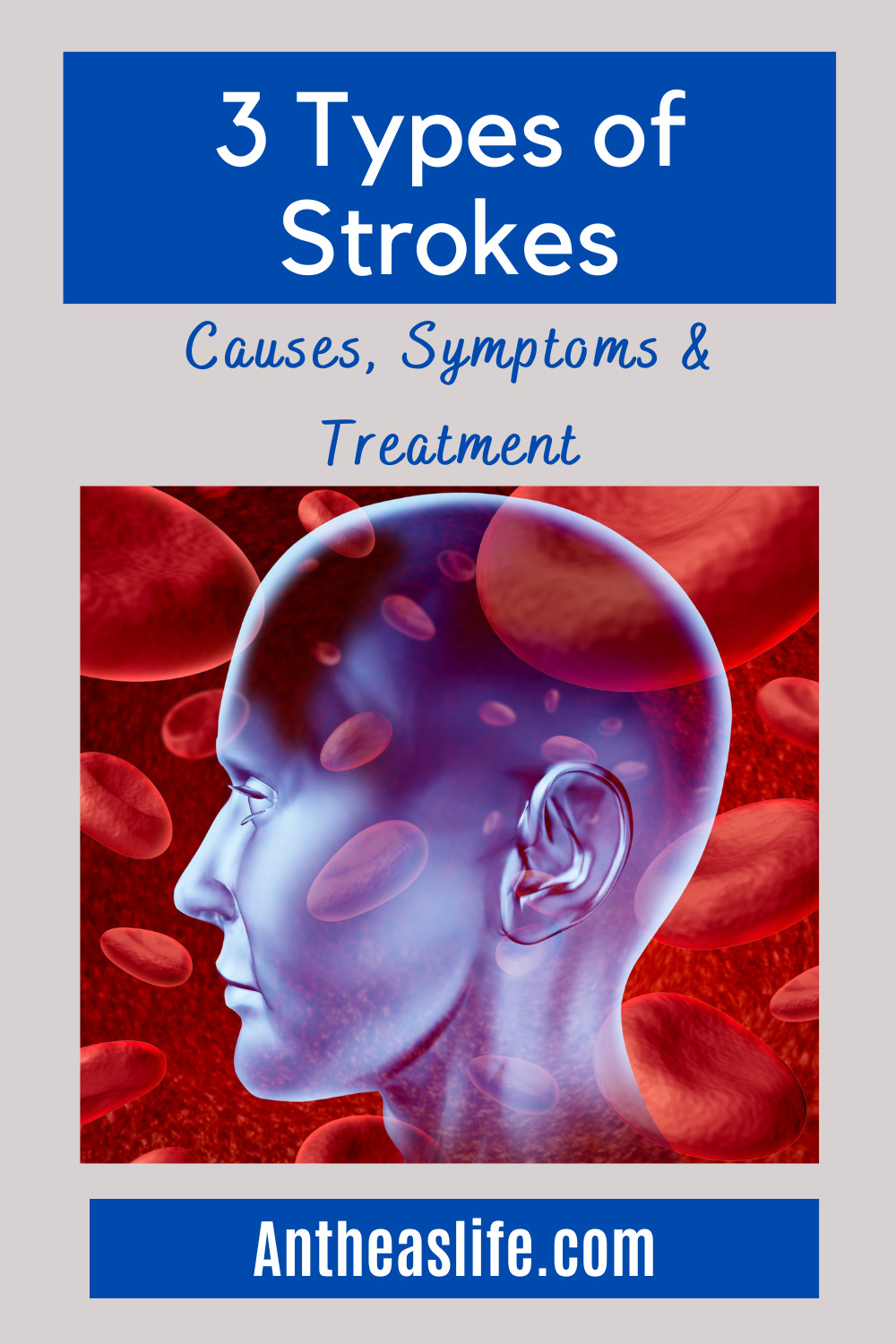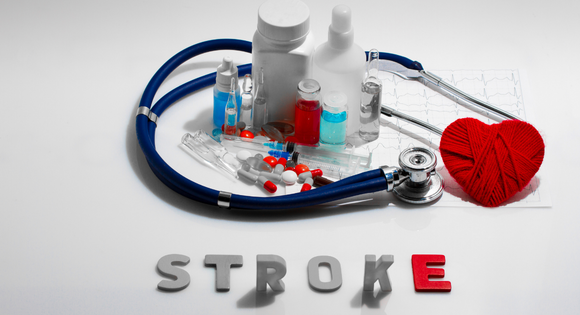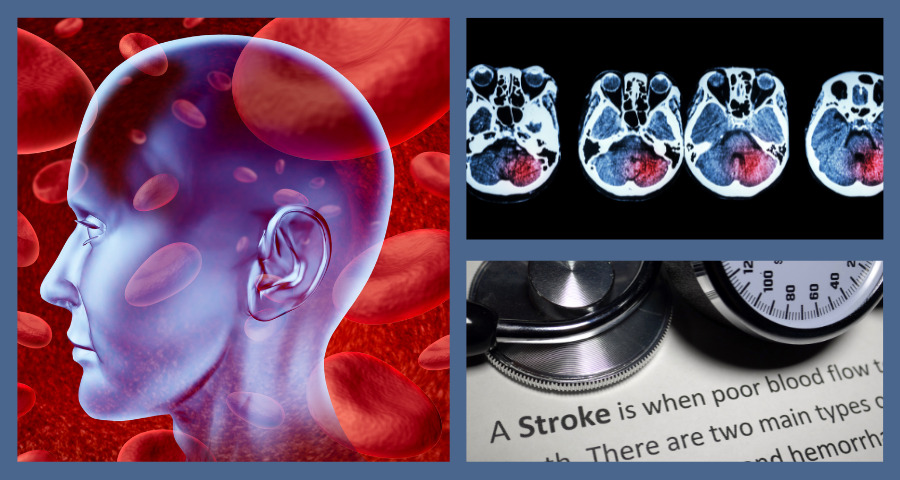Today’s post covers three types of strokes, the causes, symptoms, treatments, and what you can do to prevent them from happening. Having a stroke is a serious medical emergency and if you think you or anyone you know is having a stroke, you need to get medical assistance as soon as possible.
A stroke occurs when you have a blockage in your brain (from a blood clot), or when a blood vessel bursts. Without prompt treatment, some brain cells begin to die quickly which can result in severe disability or even death.
What Are the Symptoms of a Stroke?
- Weakness or numbness of the body, in particular, the one side
- Having trouble swallowing
- Vision changes in one or both eyes
- Problems with walking, dizziness, or balance
- Severe headaches with no apparent cause
- Trouble speaking, confusion, or having difficulty understanding others

How To Spot Symptoms More Easily – FAST Test
- Face drooping – ask the person to smile. Is his face drooping on one side?
- Arm numbness or weakness
- Speech – is the person slurring his words or struggling to repeat a sentence?
- Time to seek medical attention immediately
With a stroke, every second counts. If the brain goes without oxygen, the cells can die within minutes. When brain tissue dies, the body parts that are regulated by that area will no longer work as they should. This is why stroke is the number one cause of long-term disability. Medical professionals must give the person clot-busting drugs as soon as possible to prevent long-term damage to the brain.
What Test Are Done?
Once the person arrives at the emergency room, medical personnel will immediately order tests like an MRI, CT scan, or ultrasound. Some patients require additional tests like an EEG and EKG to test the brain’s electrical function and the heart’s electrical activity.

3 Types of Strokes
Ischemic Stroke
This is the most commonplace stroke which occurs when blood clots are blocking the blood supply to or in the brain. A blood clot might begin in another area of the body and travel to the brain. Clogged arteries are commonplace causes of a stroke.
Hemorrhagic Stroke
This type of stroke occurs when a blood vessel in your brain bursts. This leads to bleeding in the brain which is not easy to stop. High blood pressure usually leads to a hemorrhagic stroke, however, other causes include AVMs (arteriovenous malformations) or aneurysms that weaken the blood vessels in your brain.
Mini Stroke
A transient ischemic attack (TIA), also called a mini-stroke happens when blood flow to the brain is temporarily hampered, resulting in stroke-like symptoms. The symptoms will stop once the blood starts flowing again.
At the time it is difficult to tell if you’re having a transient ischemic attack or stroke, therefore, it’s best to seek medical assistance. TIA is a red flag, so speak to your doctor if you suspect you had one.

Emergency Treatment
- Ischemic stroke – blood flow needs to be restored quickly, therefore clot-busting medication is given to the patient to dissolve blood clots and prevent long-term damage. It must be given within three hours after symptoms started.
- Hemorrhagic stroke – this type of stroke is trickier to manage. The patient’s high blood pressure, brain swelling, and bleeding must be controlled.
What Are The Causes?
- Ischemic stroke – the top cause is clogged arteries caused by a buildup of fat, cholesterol, and other things that leaves less room for blood flow.
- Hemorrhagic stroke – usually happens because of unregulated high blood pressure that results in a burst artery.
What Are the Risk Factors?
You have a higher risk of getting a stroke if you:
- Had a TIA or stroke previously
- Are overweight
- Suffer from high cholesterol
- Have heart disease or high blood pressure
- Have diabetes or sickle cell disease
- Heavy drinking or smoking and not getting enough exercise

Mind What You Eat
Eating too much fatty or unhealthy foods can cause high cholesterol and plaque build-up that narrow your arteries. If you have high blood pressure, mind your salt intake and stick to a healthy diet with lots of whole grains, fresh fruits and vegetables, and fish, to lower the risk of getting a stroke.
Final Thoughts
I hope this post about the three types of strokes has been insightful. It helps to go for annual check-ups to find out if you have any health conditions that can lead to a higher risk of getting a stroke.
Try to adopt healthy habits and remember to take your medications for diabetes, high cholesterol, heart disease, etc. regularly and as prescribed. Mind what you eat, avoid heavy drinking, and if you are a smoker, try to quit or smoke less to better your chances of smoke prevention.
Sending you lots of light, love, and stroke-preventing vibes!
Anthea

